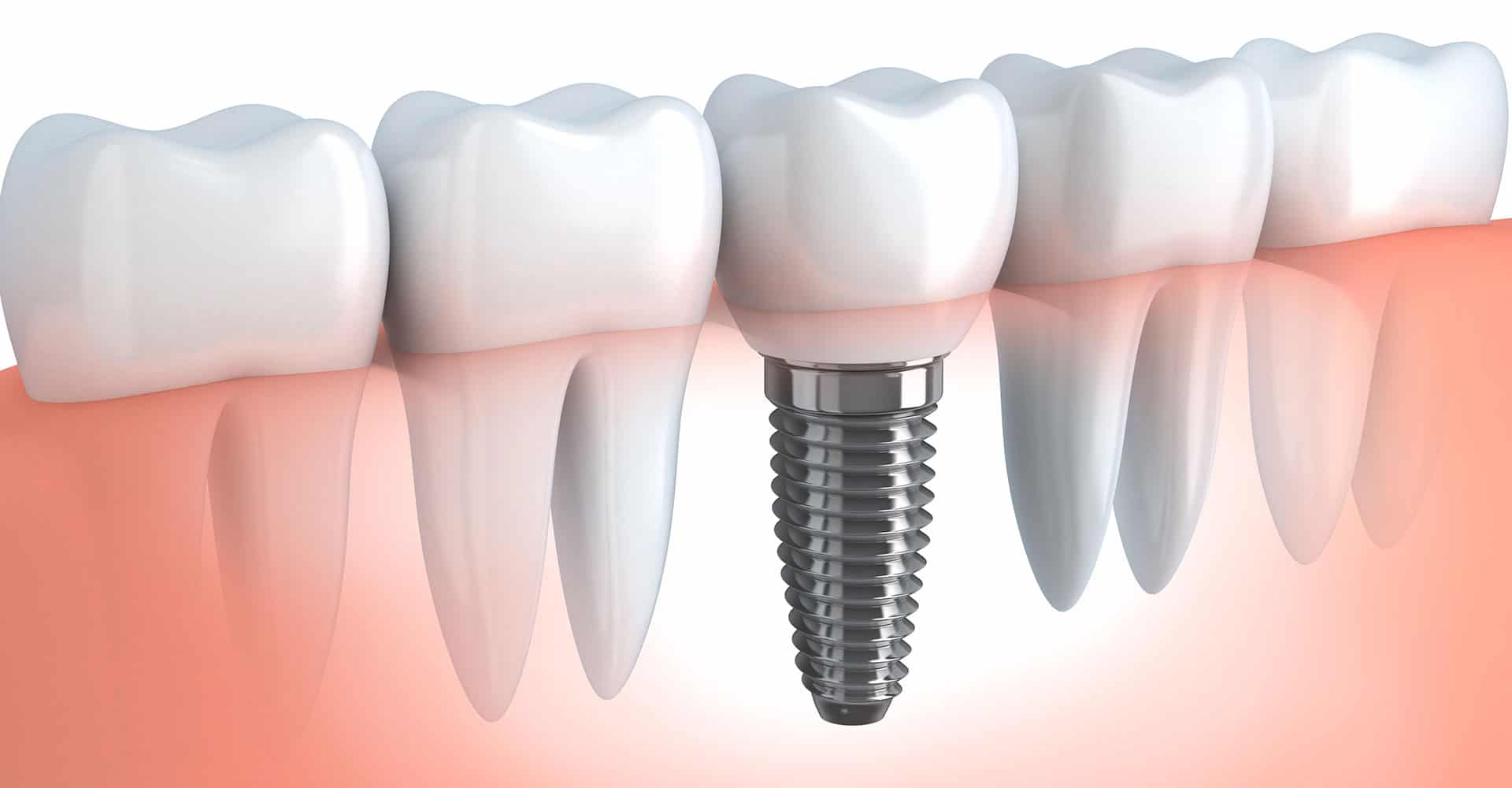Dental Implants in Mill Woods, Southeast Edmonton
Dental implants are an excellent option for missing teeth. They function, look, and feel like your natural teeth. Your smile is completely restored in appearance and functionality, allowing you to be confident and eat what you love. The titanium posts are inserted into your jawbone to create a strong foundation for your artificial tooth. Dental implants prevent bone deterioration from missing teeth and preserve your facial structure.
Dental implants are changing the way people live! With them, people are rediscovering the comfort and confidence to eat, speak, laugh and enjoy life.
Evaluation for Dental Implants
If you are interested in receiving dental implants, you will first schedule a consultation to see if you are an ideal candidate. Dr. Daya will discuss your concerns and needs.
The Dental Implant Procedure
Dental implants consist of titanium anchors placed into your jawbone to replace the roots of your tooth. The artificial tooth (crown) will be attached to the anchor with an abutment.
Dental implants typically require two procedures. The implants are first placed into your jawbone. The titanium will gradually fuse with your jawbone through osseointegration during a three to six month period. You will be given a temporary crown. Ensure you are eating a soft food diet at this time.
Once your implant has integrated, Dr. Daya will place the abutment and take impressions to fit the crown. The process of receiving dental implants usually takes six to eight months to complete. Patients should be able to resume their day-to-day activities during the process.
Dental Implant Guided Surgery
There are two ways for doing implant placement surgery – freehand and guided surgery. Research studies comparing outcome of freehand vs computer guided implant placements found that statistically higher pain and swelling were experienced at sites treated freehand with flap elevations and less marginal bone loss was observed in the computer guided group. (Computer-guided vs freehand placement of immediately loaded dental implants: 5-year postloading results of a randomised controlled trial, https://www.ncbi.nlm.nih.gov/pubmed/29806667)
Agape Dental Clinic Mill Woods uses guided surgery with surgical guides for implant placement surgery. Undoubtedly, free-hand method has been used for many years now and is more cost-effective but we believe that the advantages of guided implant surgery far out-weigh the extra cost associated with it.
Guided implant surgery, if done correctly, with proper images, can potentially provide a high level of precision and control, and can be invaluable depending on the complexity of the case and the anatomy of the patient, especially if the bone quality and quantity is not optimum.
Advantages of Guided Implant Surgery
• The surgery is safe, predictable, and precise.
• Surgery time isn’t as long.
• Shorter recovery times.
• Surgery is less invasive, reducing bleeding and pain.
• Bone grafts can be minimized.
• Improves positioning for dental crowns.
With guided surgery, all the planning and “back and forth” with drilling, angulation, and depth is all figured out before the patient appears for surgery.
Disadvantages of Guided Implant Surgery (mainly for dentist)
• Investment in expensive equipment
• Surgery planning time takes longer
Agape Dental Clinic Mill Woods has invested in CBCT and iTero scanning equipment to facilitate guided implant surgery planning.
Guided Implant Placement Surgery Process
CBCT scan of the hard tissue is taken and saved in DICOM file format. For the surface anatomy of gums and soft tissues, a digital scan is performed using iTero Digital Scanning System. The scan is saved in STL file format which is exported and merged with CBCT scan file to provide 3D images to be used with the planning software in the treatment planning and design phase. The software is used for optimum positioning of the implant, taking into consideration any structures such as sinus and nerves, bone density and adjacent teeth. The procedure is from implant restoration or crown down process ensuring that when completed, the implant crown would be in the right position with correct bite, and esthetically better than the process which starts with implant placement and trying to fit in the crown.


